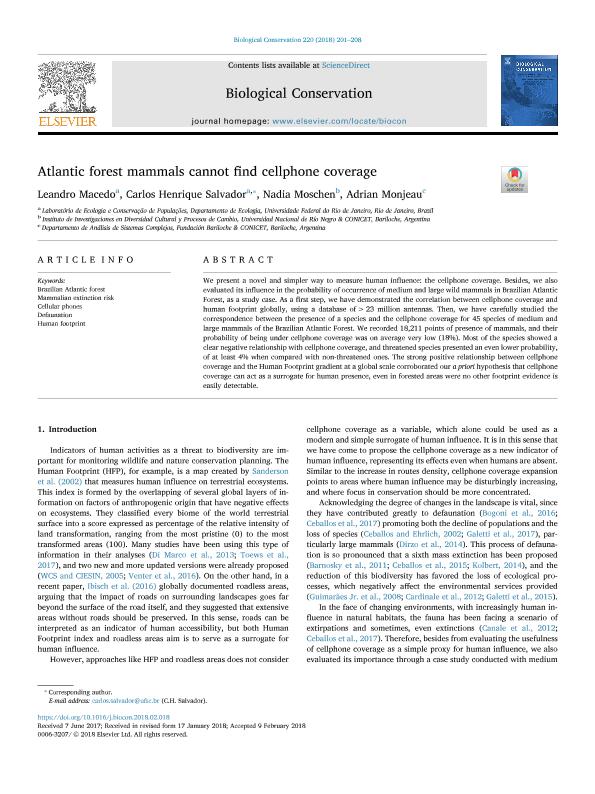Artículo
Atlantic forest mammals cannot find cellphone coverage
Fecha de publicación:
04/2018
Editorial:
Elsevier
Revista:
Biological Conservation
ISSN:
0006-3207
Idioma:
Español
Tipo de recurso:
Artículo publicado
Clasificación temática:
Resumen
We present a novel and simpler way to measure human influence: the cellphone coverage. Besides, we also evaluated its influence in the probability of occurrence of medium and large wild mammals in Brazilian Atlantic Forest, as a study case. As a first step, we have demonstrated the correlation between cellphone coverage and human footprint globally, using a database of>23 million antennas. Then, we have carefully studied the correspondence between the presence of a species and the cellphone coverage for 45 species of medium andlarge mammals of the Brazilian Atlantic Forest. We recorded 18,211 points of presence of mammals, and their probability of being under cellphone coverage was on average very low (18%). Most of the species showed a clear negative relationship with cellphone coverage, and threatened species presented an even lower probability, of at least 4% when compared with non-threatened ones. The strong positive relationship between cellphone coverage and the Human Footprint gradient at a global scale corroborated our a priori hypothesis that cellphonecoverage can act as a surrogate for human presence, even in forested areas were no other footprint evidence is easily detectable.
Archivos asociados
Licencia
Identificadores
Colecciones
Articulos(CCT - PATAGONIA NORTE)
Articulos de CTRO.CIENTIFICO TECNOL.CONICET - PATAGONIA NORTE
Articulos de CTRO.CIENTIFICO TECNOL.CONICET - PATAGONIA NORTE
Citación
Macedo, Leandro; Salvador, Carlos Henrique; Moschen, Nadia Leticia; Monjeau, Jorge Adrian; Atlantic forest mammals cannot find cellphone coverage; Elsevier; Biological Conservation; 220; 4-2018; 201-208
Compartir
Altmétricas




